The South Pole is the southernmost point in the world and is located in Antarctica. The surrounding area is a vast and icy landscape that is largely barren of features. Despite this, it is still a fascinating and unique place, and one of the most fascinating facts is that there are no countries at all on the Antarctica continent, although several countries have made territorial claims to it. However, this often leads to interesting questions, such as which countries are nearest to it.
So, keep reading if you’re curious about the answer as we discover the countries closest to the South Pole based on the location of their southernmost point. However, although there are several islands that are considered to be overseas territories of other countries, we’ll only be focusing on the areas that are true countries.
10. Paraguay

The Paraguay River divides the country into two distinct regions.
©Matyas Rehak/Shutterstock.com
The first country on the list and the one that takes the tenth spot is Paraguay in South America. Paraguay is a landlocked country that is bordered by Argentina, Bolivia, and Brazil. The capital city is Asunción, which currently has an estimated population of 3.5 million people, which is a large portion of Paraguay’s entire population of 6.8 million people.
Paraguay has two main geographical regions which are divided by the Paraguay River. The eastern region consists of mainly hills, mountains, and valleys, while the western region consists of mostly open plains.
9. Namibia

African wild dogs are just one of many endangered animals in Namibia.
©Ondrej Prosicky/Shutterstock.com
The next country is Namibia, which is located next to the Atlantic Ocean in the southern region of Africa. Namibia has a current population of around 2.6 million, with the most populous area being in and around the capital city of Windhoek. It is one of the most arid countries in the world. As a result, it is generally considered to be the driest place in the world after the Sahara Desert. On average, it only receives 14 inches of rain per year. However, despite the harsh conditions, Namibia is home to a diverse range of species, including endangered animals such as African wild dogs and black rhinos.
8. Lesotho
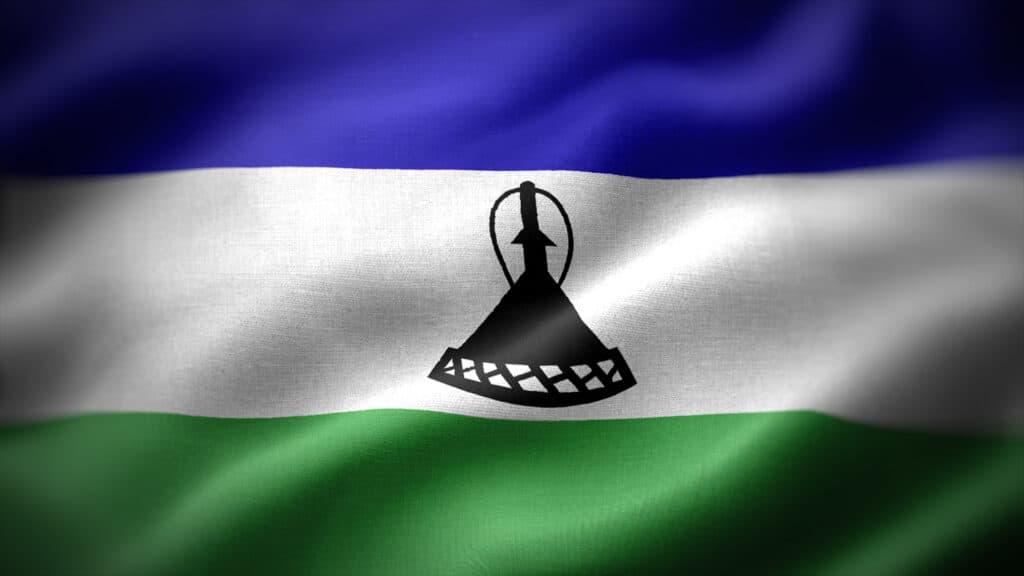
The entire country of Lesotho is located at an elevation of 4,593 feet or more above sea level.
©Tatohra/Shutterstock.com
Also in southern Africa is Lesotho, which is the next southernmost country on the list. Lesotho has the unique position of being entirely surrounded by South Africa, which is its only neighbor. Lesotho is a small country and spans only 11,720 square miles, with a population of around 2.32 million. The country also has a high elevation, with the lowest point being 4,593 feet above sea level and much of the rest of the country being situated above 5,000 feet. Lesotho’s high elevation also means that it has a relatively cool climate.
7. Brazil
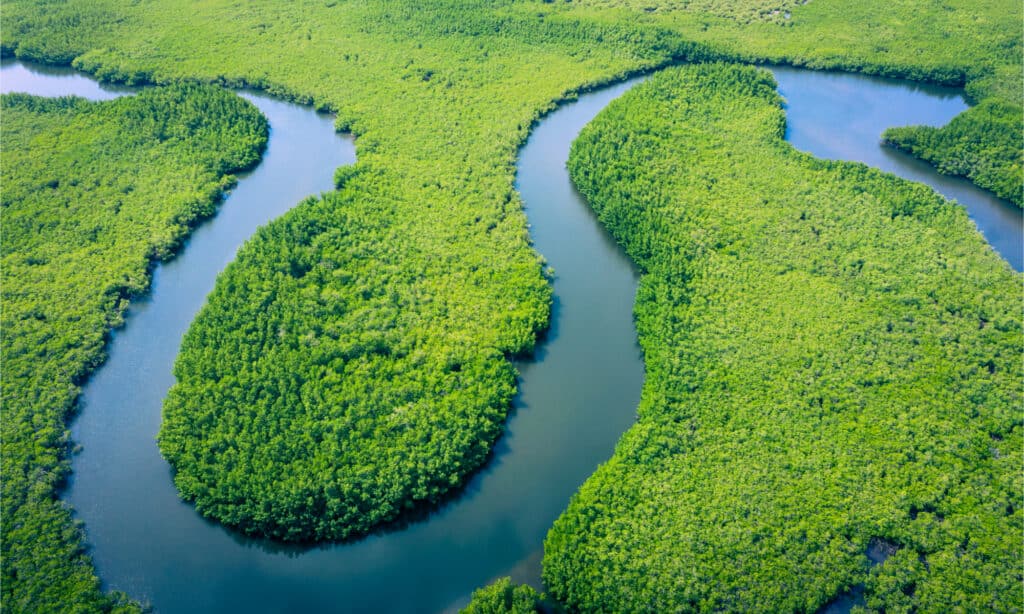
The vast Amazon rainforest is one of the main features of Brazil.
©Curioso.Photography/Shutterstock.com
Another country in South America on the list is Brazil. The southernmost point of the country is the Chuí stream, which is located on the border between Brazil and Uruguay. Brazil is the largest country in South America and also the fifth-largest in the world. Considering its large size, it’s no surprise that Brazil features a wide and diverse range of habitats.
One of the most famous areas of Brazil is the Amazon rainforest, of which around 60% of it is situated within the country. The Amazon River also flows through the country, and both are incredibly biodiverse regions. There are thousands of different species of animals living within them, many of which are rare and endangered.
6. Uruguay

The majority of people in Uruguay live around the Montevideo area.
©Leonid Andronov/iStock via Getty Images
Situated just below Brazil is Uruguay, whose southernmost point is the Isla de Lobos, which is a small island around five miles from the mainland. Uruguay has a population of approximately 3.4 million, of which around two million live in the Montevideo metropolitan area.
Montevideo also holds the position as being the third-most southern capital city in the world, after the capitals of Australia and New Zealand. Much of the country is covered with vast plains and plateaus. However, there are also several significant wetland regions caused by the three major rivers that run through it, one of which is the Uruguay River.
5. South Africa
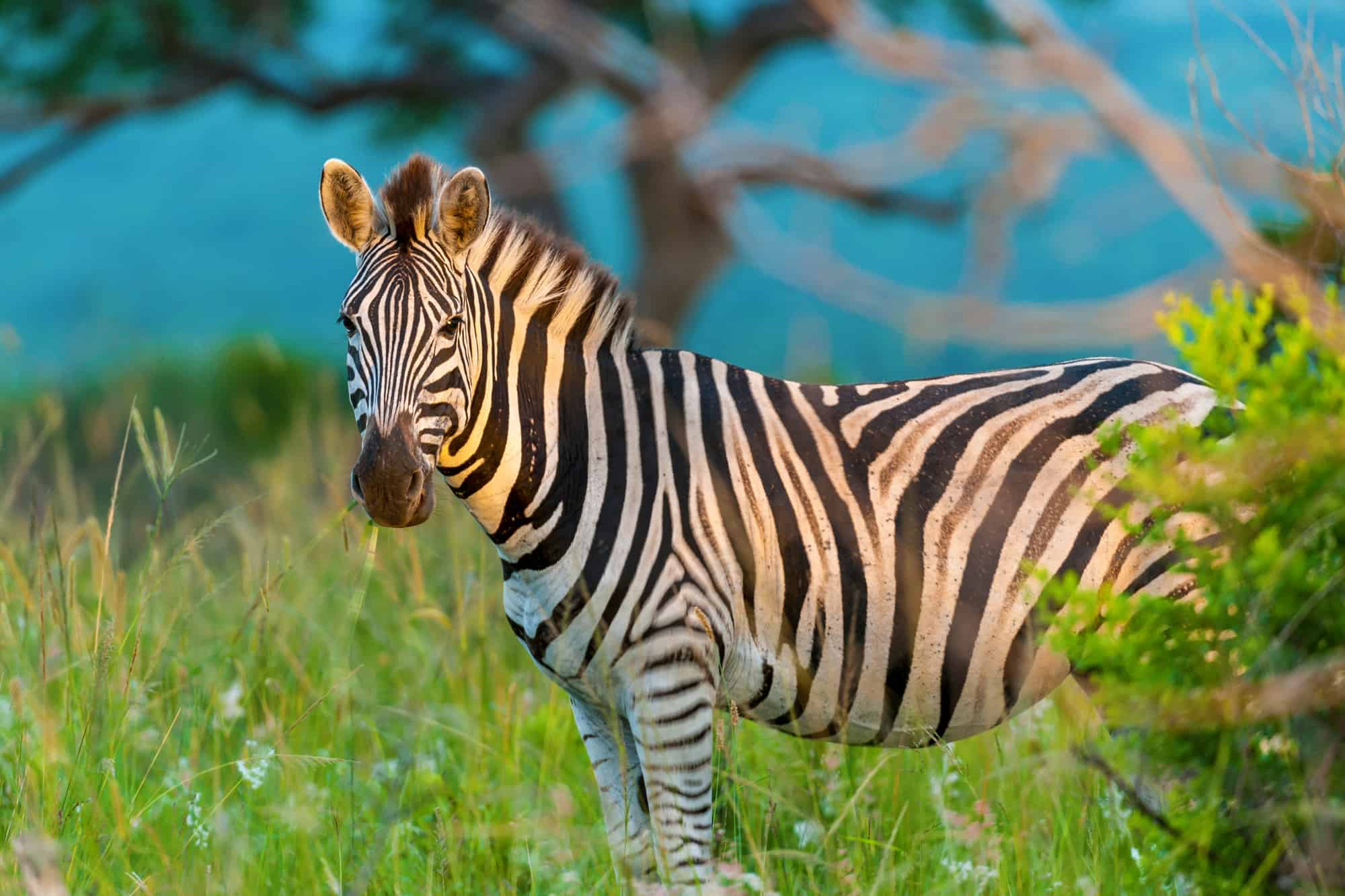
South
Africa
is home to a wide variety of plants and animals.
©Roger de la Harpe/Shutterstock.com
The next country is South Africa, whose southernmost point is Cape Agulhas. Cape Agulhas is a rocky headland that serves as the dividing point between the Atlantic and Indian Oceans. South Africa has a population of around 60.5 million people, and there are 12 official languages in the country, although around 35 are actually spoken.
South Africa is also one of the most diverse countries in the world when it comes to plants and animals. There’s a wide variety of different species living in it, many of which are endemic.
4. New Zealand
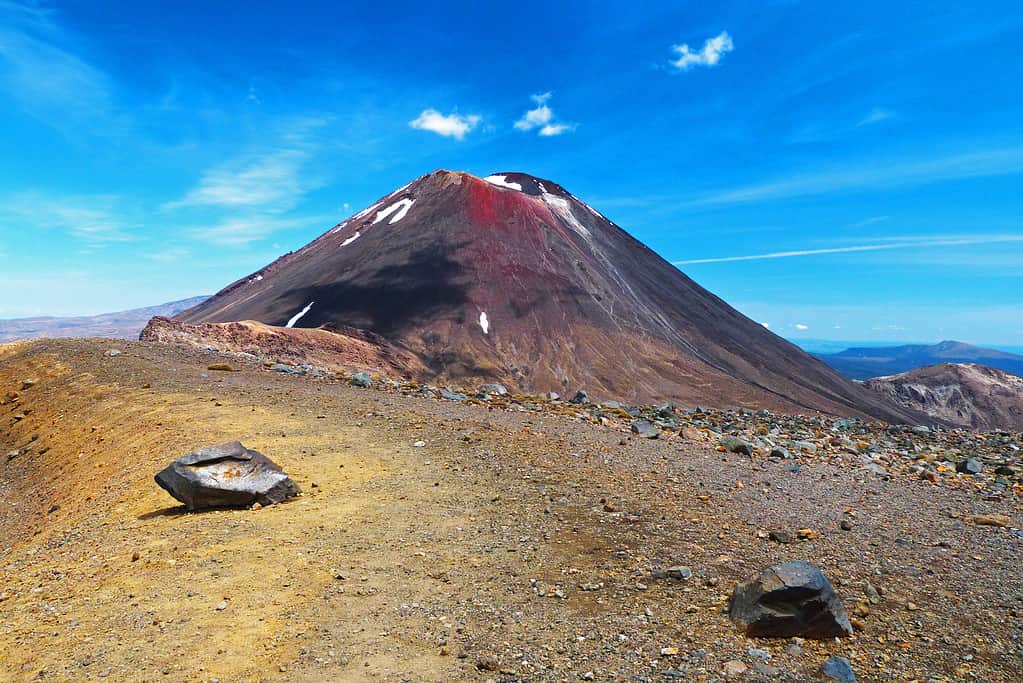
Much of New Zealand’s landscape was formed by volcanic activity.
©Milan Sommer/iStock via Getty Images
The fourth country closest to the South Pole is New Zealand. New Zealand is comprised of two main islands — North Island and South Island — and approximately 600 smaller ones. The southernmost point is Jacquemart Island, which is a small islet near Campbell Island and is approximately 440 miles from South Island.
South Island is the larger of the two main islands, although Wellington, the capital, is located on North Island. Much of New Zealand’s landscape was shaped by volcanism, and as a result, there are a vast number of volcanoes and volcanic islands across the country. However, there are also steep mountains and stunning lakes and fjords.
3. Australia
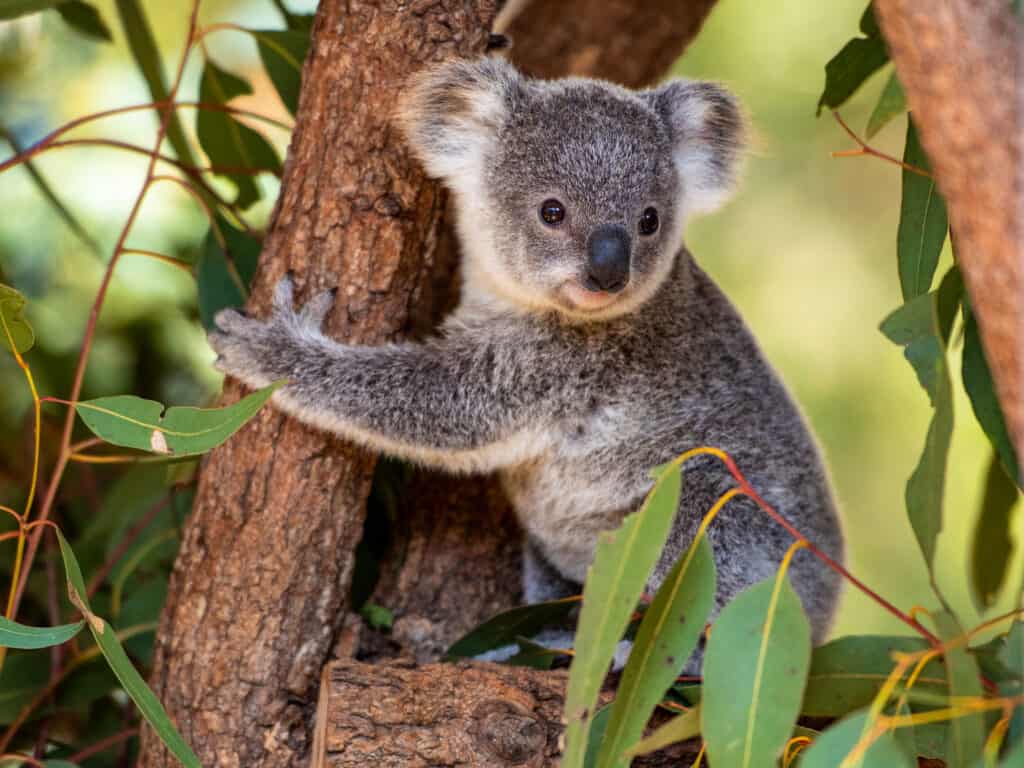
The iconic koala is just one of many animals endemic to Australia.
©iStock.com/eeqmcc
The location of Bishop and Clerk Islets in Tasmania means that Australia takes the third spot. Tasmania is located around 150 miles south of mainland Australia, and the island spans 26,410 square miles.
Australia is a hugely diverse country and features a wide variety of different habitats. These habitats include mountains and rainforests, although the outback forms a large part of the country. Despite much of Australia being arid, it is still teeming with wildlife, including the fascinating platypus and the iconic koala. Plus, the Great Barrier Reef is located just off the Australian coast and is home to approximately 9,000 different species.
2. Argentina

Argentina has several mountainous regions.
©saiko3p/iStock via Getty Images
The country that ranks second on the list is Argentina, with its southernmost point being Islote Blanco, which is an uninhabited island in the Beagle Channel. Argentina spans 1,073,518 square miles and is the second-largest South American country.
Argentina typically has a subtropical climate, although it does become colder in the southern and mountainous regions. The country has a wide variety of habitats which are home to an incredibly diverse range of both plant and animal species. There are also many endemic species in Argentina. These include the tiny pink fairy armadillo, which is only three to four inches long and inhabits grasslands and sand dunes.
1. Chile
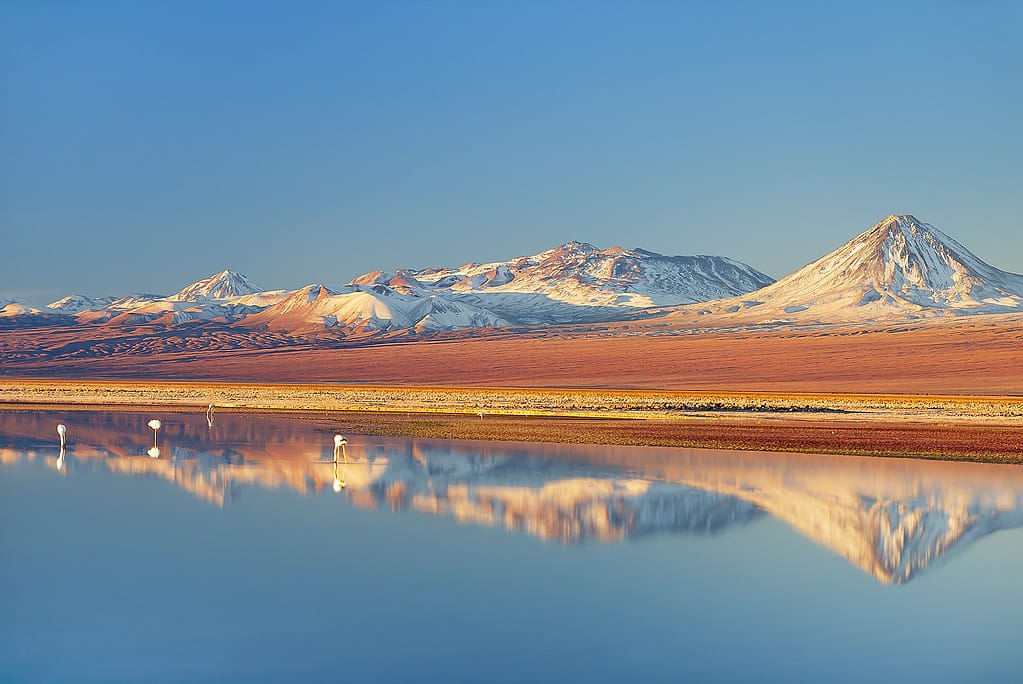
Chile is the closest country to the South Pole, being just 590 miles from the Antarctic Peninsula.
©longtaildog/iStock via Getty Images
The country closest to the South Pole is Chile, which is also the southernmost country in the world. Chile is located in South America and consists of a narrow area between the Pacific Ocean and the Andes mountains. The most southerly point is Águila Islet in the Diego Ramírez Islands, which is just 590 miles from the Antarctic Peninsula.
Chile is approximately 2,670 miles long but is only 217 miles across at its widest point. The country features a wide variety of different climates and landscapes, from dry deserts to rich river valleys. It also features a huge number of mountains, which cover around 80% of the country. These include Nevados Ojos del Salado, which is located on the Argentinian border and is the highest volcano in the world.
The photo featured at the top of this post is © Mesa Studios/Shutterstock.com
Thank you for reading! Have some feedback for us? Contact the AZ Animals editorial team.







